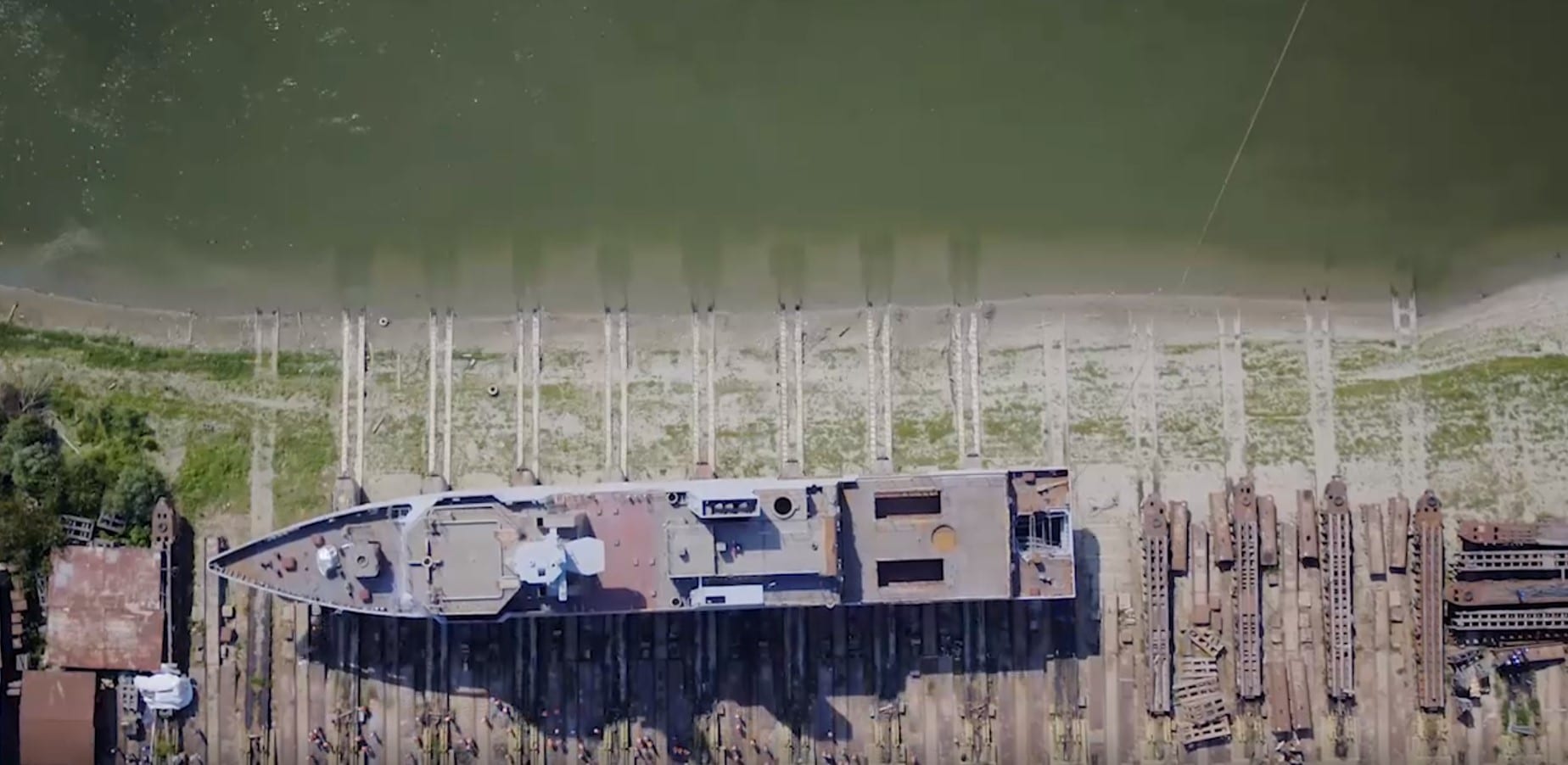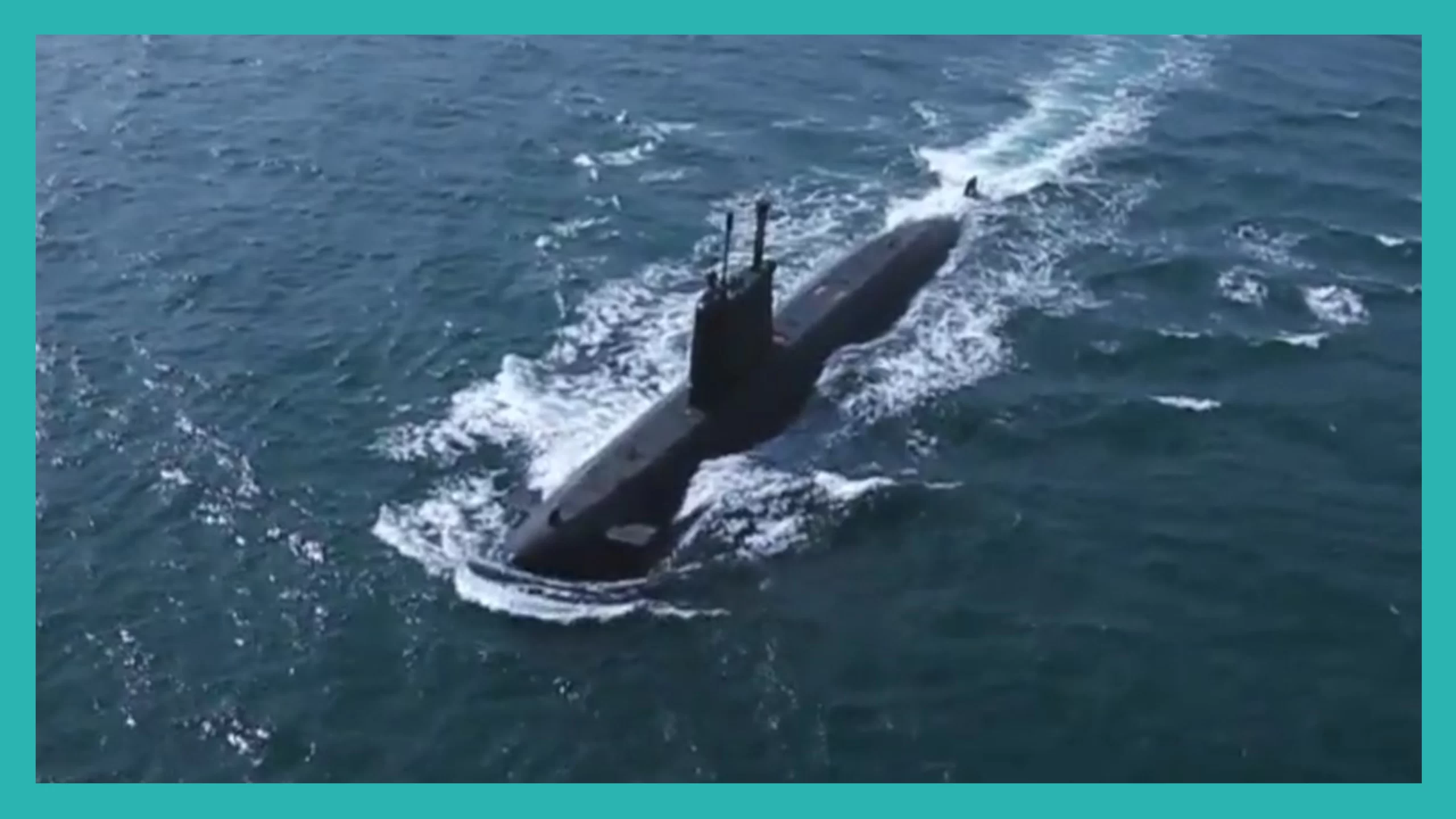2602Views 0Comments

Pakistan Navy’s Damen Corvette / Offshore Patrol Vessel
In June 2017, the Pakistan Navy (PN) and the Pakistan Ministry of Defence Production (MoDP) signed a deal with Damen Shipyards for a “multipurpose offshore patrol vessel” (OPV).
The contract was for two OPVs, one of which was to be built in Pakistan. However, the deal was revised at some point to have both ships built at Damen Shipyards’ facilities in Galati, Romania.
In addition, since the launch of the first ship in May 2019, the PN began referring to the OPVs as corvettes.
Neither the PN, MoDP or Damen Shipyards disclosed the price of the OPVs, but the MoDP stated that the ships will be equipped for a range of roles, including:
“…anti-surface [operations], anti-air operations, maritime security operations, day [and] night helicopter operations, combat search and rescue (CSAR), and surveillance and intelligence gathering operations.”
In other words, the PN intended to operate the OPVs as multi-purpose surface combatants.
As of September 2019, Damen Shipyards launched both ships for sea trials, with the first in May 2019 and the second in September 2019. It is not known if the PN will procure additional corvettes from the Dutch shipbuilder, or from others (such as Swiftships, which is based in Louisiana).
Design & Specifications
When the MoDP and Damen Shipyards first announced the deal in 2017, they said that these ships would be OPVs with a length of 90 m, displacement of 1,900 tons, and maximum speed of 22 knots.
However, since their launch, the PN stated that the ships were in fact corvettes with a markedly heavier displacement of 2,300-tons. Moreover, the PN’s ‘corvette’ does not appear to be a direct variation of the Damen OPV-line or the Sigma corvette and frigate series.
Rather, it appears that the PN’s corvette draws from both the OPV and Sigma lines. It is possible that the PN’s corvette is closer to the OPV line, at least in terms of hull and superstructure construction.
While the PN did change the scope of the program, it is unlikely that it would have deviated too far from what it and Damen had originally agreed to under the OPV contract in 2017.
One possibility could be that the PN’s corvettes are based on the Damen OPV 2400, which (like the 1,900 OPV) has a length of 90 m and a maximum speed 23 knots. The OPV 2400 supports a crew of 60.
According to Damen Shipyards, the OPV 2400 can support up to two additional “mission modules,” which can include anti-submarine warfare (ASW), mine countermeasures (MCM), logistics, and others.
Damen’s OPVs were designed as lower cost ships compared to the Sigma. For example, Malaysia’s OPV 1800s came with a unit price of $55.7 million, which is lower than the average cost of multirole corvettes, such as the MILGEM or Gowind, which are priced at around $250-300 million per ship.
Granted, the cost of electronics, sensors, and weapons on multirole corvettes constitute a large portion – if not the majority – of the cost, controlling the baseline cost will generally result in a lower overall price.
Weapons & Subsystems
The PN planned to use the corvettes as multi-role combat assets right from the start. Of the capabilities planned for this corvette type, the centerpiece appears to be its ‘anti-surface’ weapon system.
According to the PN’s Chief of Naval Staff (CNS), Admiral Zafar Mahmood Abbasi (via Asian Defence Journal), the corvettes will be “equipped with indigenously developed SSMs (surface-to-surface missiles) besides close-in-weapons-system (CIWS), anti-aircraft guns and a modern EW (electronic warfare) suite.”
The description, “indigenously developed SSMs” implies that the PN will equip the corvettes with its Harba dual anti-ship cruising missile (ASCM) and land-attack cruise missile (LACM). The PN did not disclose the range of the Harba ASCM/LACM, but it could be between 450 km and 700 km (i.e., the range of the Babur 3 submarine-launched cruise missile and Babur Version 2 LACM, respectively).
In effect, the corvettes would have the ability to engage stand-off range strikes – and, potentially, strategic strikes – as well as support the PN’s littoral anti-access and area-denial (A2/AD) efforts.
That said, at this point the Harba is only one option. In its most recent disclosure, Pakistan’s MoDP also stated that it signed off on an indigenous supersonic missile for the PN.[1] The MoDP did not offer additional details about the supersonic missile, but an air-breathing supersonic-cruising design is plausible.
A supersonic ASCM would provide the corvettes – and the PN at large – a credible anti-shipping capability by rendering defensibility against the PN’s AShM/ASCMs more difficult, especially with a mix of subsonic ASCM (e.g., the Harba, C-802, Harpoon, etc) and the Pakistan Air Force’s (PAF) CM-400AKG.
In effect, the PN is basically countering the BrahMos threat with an analogous solution (i.e., giving the Indian Navy the same trouble it is posing to the PN).
In terms of the corvette design’s other weapon systems, its CIWS will essentially offer a very short-range air defence (VSHORAD) umbrella against low-flying aircraft and incoming missiles.
The PN did not disclose the make, model, or origin of the CIWS, but it might be of the same model chosen for the PN’s future Jinnah-class (MILGEM) frigates. Turkish observers believe that the Jinnah-class will use the Aselsan Korkut-Naval, a radar-guided CIWS; however, the PN has multiple options, and a Chinese one (akin to the one selected for the Type 054A/P frigate) is also possible.
That said, a Turkish CIWS would make sense seeing how the PN is already planning to equip these ships with other Turkish subsystems, such as the Aselsan ALPER low-probability-of-intercept (LPI) radar.
The PN has sought Turkish subsystems for a variety of platforms, such as the Agosta 90B submarine and Moawin-class fleet support tanker. And, if anything, Aselsan is already involved with the Damen Shipyards corvette through the ALPER, so extending its cooperation to CIWS, the combat management system (CMS), and/or electronic support measures (ESM), ELINT and EW is also plausible.
In this respect, single-sourcing from the Turks would not only provide a cohesive system (whereby all sub-systems work as intended), but a measure of commonality with the Jinnah-class frigates as well.
Regardless of the source, the corvettes’ ELINT/ESM would provide the PN with another passive asset for building its EW threat library (joining the Aselsan ARES-2SC/NS-equipped Agosta 90B submarines). Besides Aselsan, potential ELINT/ESM sources also include Italy’s Elettronica Group and Leonardo.
Interestingly, the PN’s corvettes appear to be large enough to house some type of anti-submarine warfare (ASW) capability. Though the onboard helicopter could provide ASW, it is possible that – at least as a mid-life-update – the PN could add ASW to the corvettes. Though ASW is inherently difficult, the corvettes will offer a cost-effective platform through which the PN can field ASW in numbers.
Future Possibilities
As discussed in a previous Quwa Premium article, the Damen corvette/OPV offers the PN a comparatively low-cost platform it can not only acquire in quantity, but develop further.
The latter is contingent on the types of subsystems available to the PN in the future, but to its credit, the PN (with its supersonic ASCM) is looking to secure those upgrade paths through domestic means. It could also look to collaborating with Turkey and South Africa to further its naval weapons development, notably in terms of anti-submarine and anti-air weapons, respectively.
That aside, there might be an underlying industrial effort tied to the PN’s corvette program. While it may sound odd seeing that the corvettes are being built overseas, the PN has quietly been working with Damen Shipyards and Swiftships — which had also offered a corvette design in 2017 — in other projects.
Damen Shipyards sold two ASD Tugs 2009s and two Stan Patrol 1605 FRP (i.e., Fibre Reinforced Polymer) patrol boats to Pakistan. Karachi Shipyards & Engineering Works (KSEW) built all four ships with technical documentation and material kits from Damen Shipyards.
Likewise, Swiftships is building a 45 m fast patrol vessel (FPV) in collaboration with KSEW (as part of what Swiftships says is a “joint-venture”). In 2017, Swiftships said it got an order for two 75 m Swift Corvettes from Pakistan (via Mönch) with an option for two more in 2020 (via Marine News).
However, the intended mission-role of the Swift Corvette was identical to the Damen Shipyards’ corvettes, i.e., “anti-surface and anti-air operations, maritime security, day-and-night helicopter activities, combat search and rescue, and surveillance and intelligence gathering.”
Thus, it would appear that the Swiftships and Damen Shipyards were competing with one another for the PN’s corvette bid. Moreover, there have been no additional reports of contract signings/announcements.
That aside, Swiftships’ original proposal involved Lockheed Martin’s CMS, which would fall under the US’ export controls. So, if the Swift Corvette is still a factor, Swiftships would have had to replace American-origin subsystems and weapons from the design with alternatives.
However, if Damen won a tender, and the PN is procuring the Damen corvettes along the same pattern as the Swift Corvette, then the PN could order two additional corvettes from Damen by 2020. However, a follow-up order could potentially involve transfer-of-technology (ToT) and design rights to KSEW.
First, KSEW will greatly expand its shipbuilding capacity once its ship lift-and-transfer system is active. This would enable KSEW to manage up to 10 ship projects by leveraging worksites in-land.
Second, Damen Shipyards built a bespoke design for the PN, one that it is not listed in Damen’s product portfolio. There is no official name for it, and with the PN opting to configure it along unconventional lines (by sourcing weapon systems that are not Damen Shipyards’ partners), it may be for Pakistan exclusively.
Third, the PN has shown that it is willing to buy the design rights to its future ships for the sake of domestic manufacturing. The prime example of this is the Jinnah-class frigate, a custom design of the MILGEM. So, if there is a long-term commitment to this corvette design, the PN could buy its rights.
If not buy rights for a key system, it could consider developing one alone or in collaboration with a foreign partner. The next-generation miniature diesel electric submarine program is an example of this effort, as is the PN’s supersonic-cruising ASCM and, reportedly, domestic surface-to-air missile (SAM) project.
Buying the design rights of the corvette would allow the PN to customize the ships at-will. It can opt for its choice of steel, propulsion, electronics, and weapons suppliers. In turn, it can control the cost further, and in turn, create a more cost-effective solution (e.g., by swapping Western steel suppliers with Eastern ones, among other choices). If Pakistan can indigenize more of the inputs, it can cut costs even further.
Alternatively, the PN might not have fully decided on a mainstay corvette. It appears that Swiftships is still interested in engaging on this front. In fact, during the 2018 International Defence Exhibition and Seminar (IDEAS 2018), Swiftships and KSEW inked a memorandum-of-understanding (MoU) for the “co-production of steel, aluminium and fibre hull boards for Pakistan Navy, fisheries and commercial sector.”
So, either Swiftships is still interested in a more marquee project like the corvettes, or the PN is engaging it across other areas. In any case, a large-scale corvette (for littoral defence or A2/AD, sea control, policing, CSAR, and other roles) program built on an original design for the PN is plausible.
[1] Year Book 2017-2018. Ministry of Defence Production. Government of Pakistan. 05 September 2019. URL: http://www.modp.gov.pk/frmDetails.aspx




